Asia
Asia is the world largest continent, having an area of 44,444,100 sq km.
It covers about 30% of Earth’s total land area and 8.7% of the Earth’s total surface area. with a population of 4.4 billion which is 60 % of the world’s total population.
It is a continent of contrast in relief, temperature, vegetation and people also.
Asia is to the east of the Suez Canal, the Ural River, and the Ural Mountains, and south of the Caucasus Mountains and the Caspian and Black Seas.
It is bounded on the east by the Pacific Ocean, on the south by the Indian Ocean and on the north by the Arctic Ocean.
The earth’s highest and lowest places are both in Asia:
- The highest place on earth: Mount Everest
- The lowest place on earth: Dead Seashore
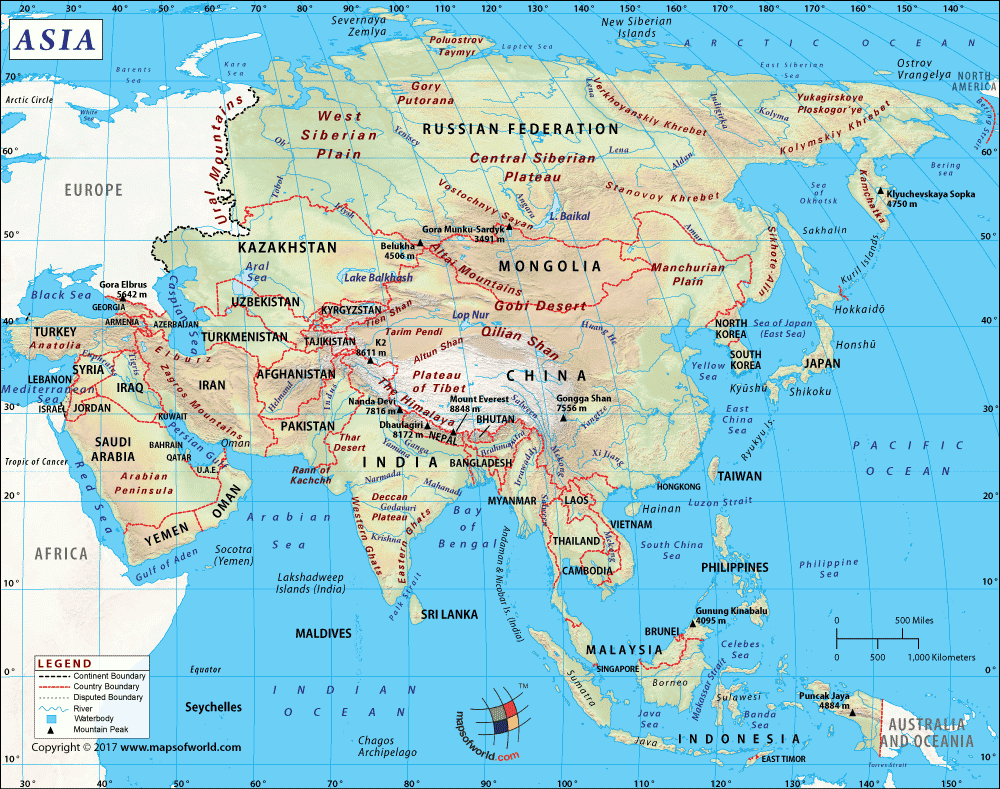
Regional Divisions of Asia
Asia can be divided into six physiographic divisions:
Central Asia: Kazakhstan, Kyrgyzstan, Tajikistan, Turkmenistan, Uzbekistan
Eastern Asia: China, Hong Kong, Japan, North Korea, South Korea, Macau, Mongolia, Taiwan
Northern Asia: Russia
South-eastern Asia: Brunei, Myanmar, Cambodia, Indonesia, Laos, Malaysia, Philippines, Singapore, Thailand, Timor-Leste, Vietnam.
Southern Asia: Afghanistan, Bangladesh, Bhutan, India, Maldives, Nepal, Pakistan, Sri Lanka.
Western Asia: Armenia, Azerbaijana, Bahrain, Cyprus, Georgia, Iran, Iraq, Israel, Jordan, Kuwait, Lebanon, Oman, State of Palestine, Qatar, Saudi Arabia, Syria, Turkey, United Arab Emirates, Yemen.
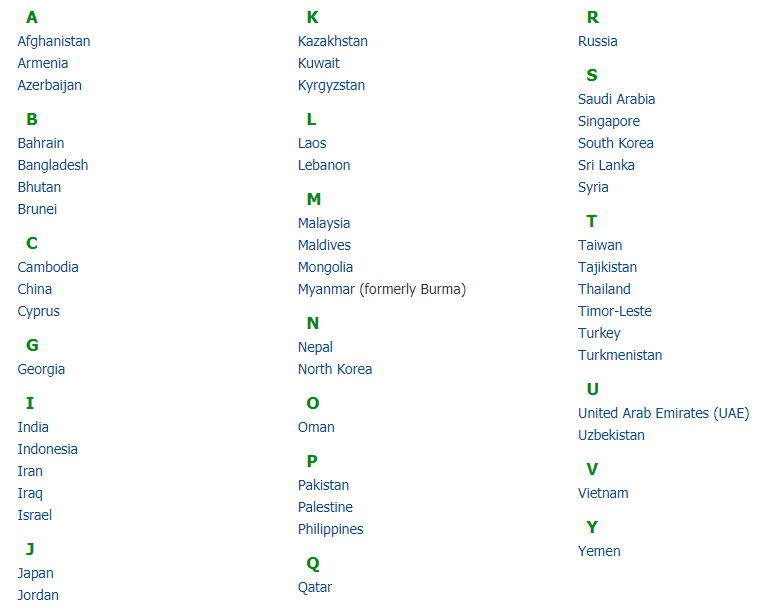
Major Physical Divisions of Asia
- The Northern Lowlands
- The Central Mountains
- The Central and Southern Plateaus
- The Peninsulas
- Deserts
- The Great River Plains
- Island Groups
1. The Northern Lowlands
The Northern Lowlands are the extensive plain areas that comprise of several patches of lowlands of this large continent.
The major lowlands are:
Great Siberian plain
- It extends between the Ural Mountains in the west and the river Lena in the east. It is the largest lowland in the world covering an area of 1,200,000 square miles approx.
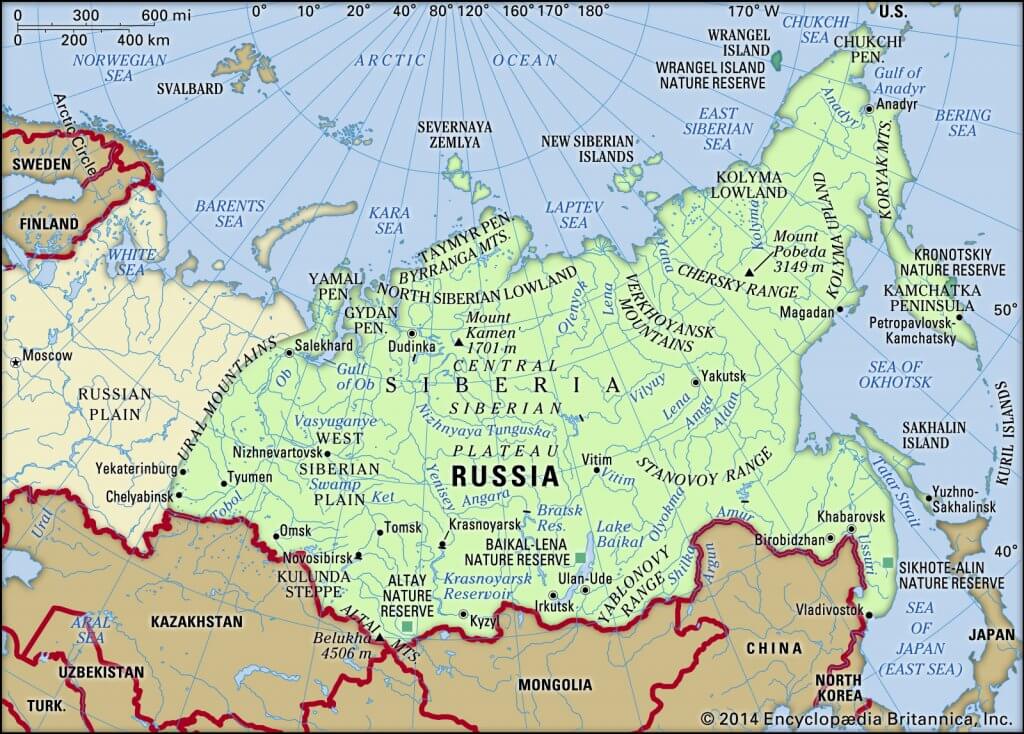
Manchurian Plain
- It is the area adjoining Amur river and its tributaries of the northern part of China with an area of 135,000 square miles approx.
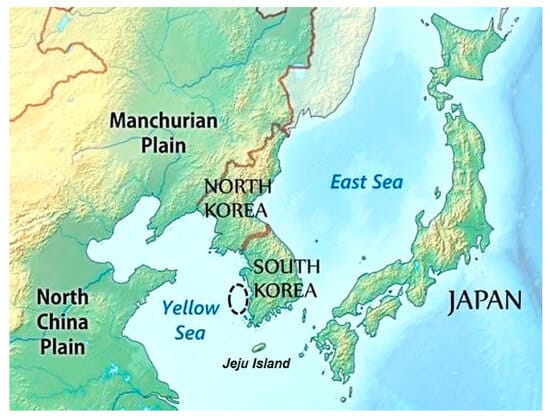
Great Plains of China
- It is contributed by two major rivers of China, Hwang Ho and Yangtze river which covers an area of 158,000 square miles approx.
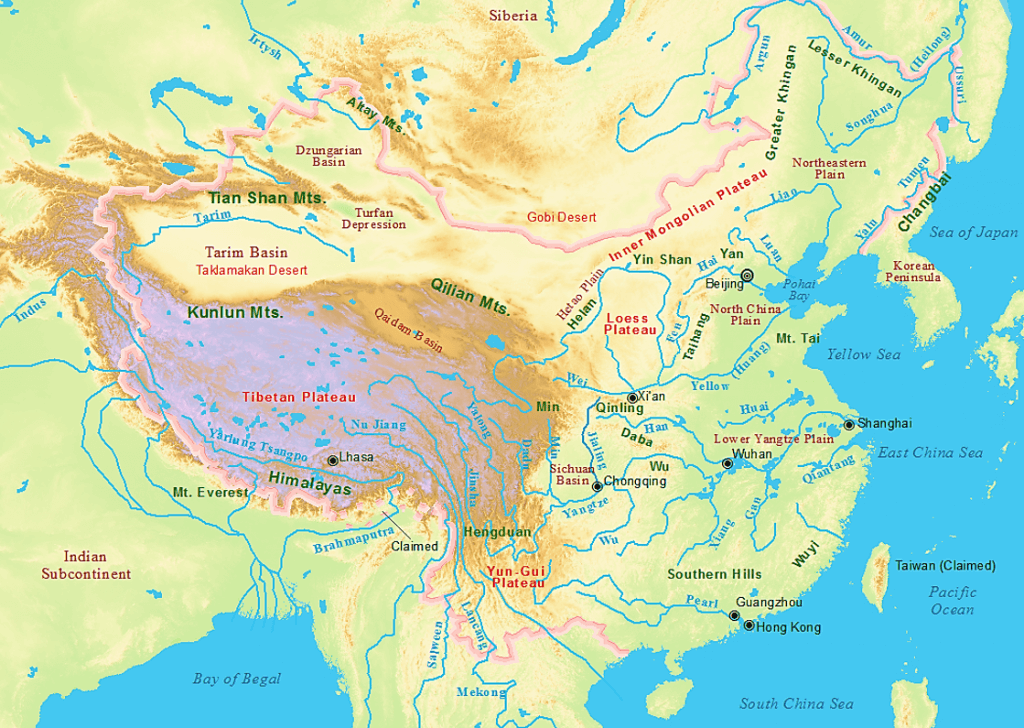
Tigris-Euphrates plains
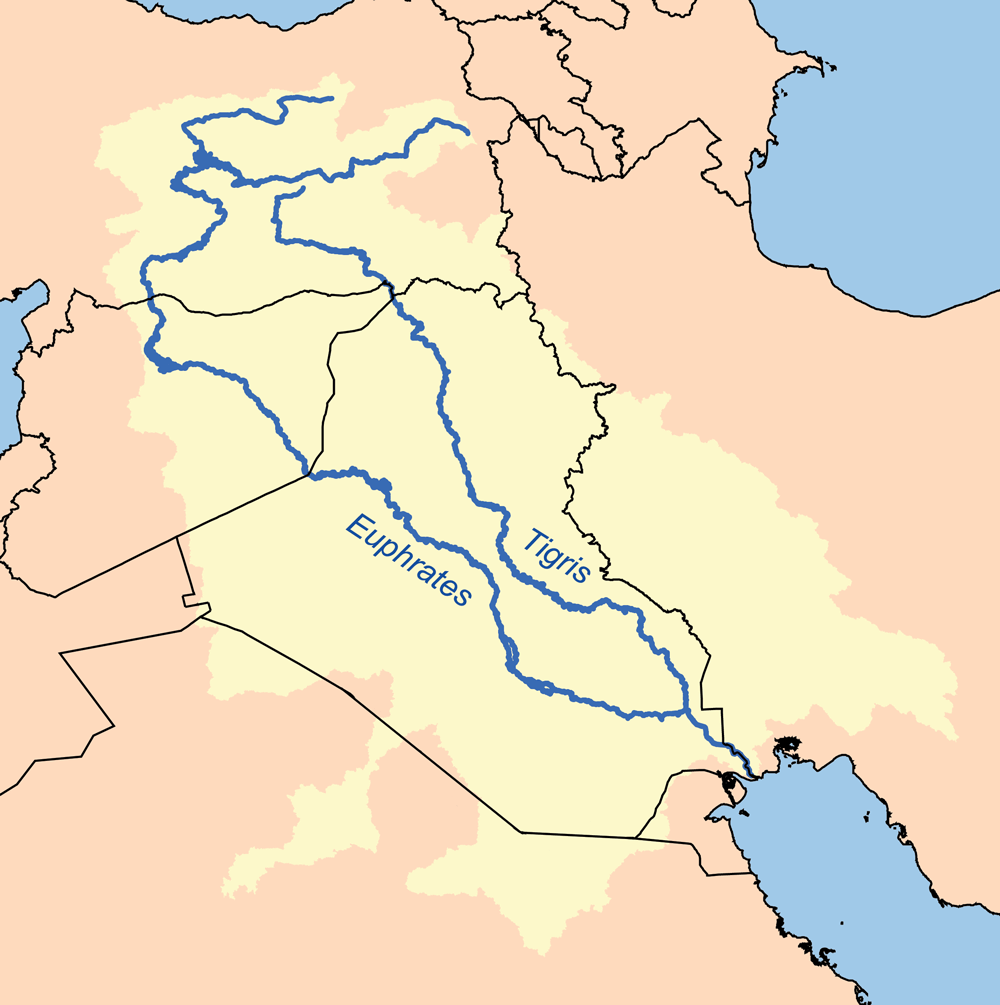
Ganga plains
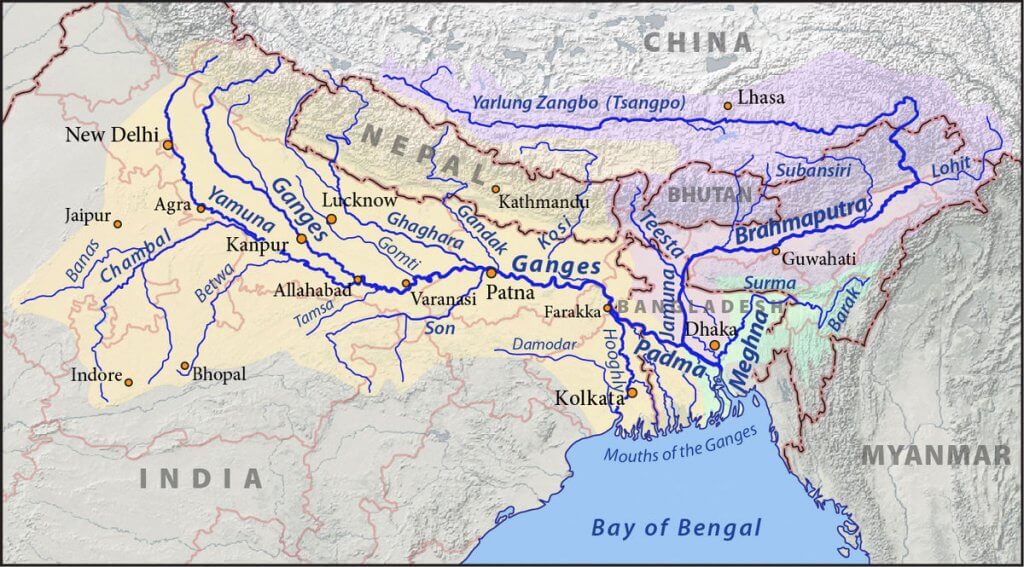
Irrawaddy plains
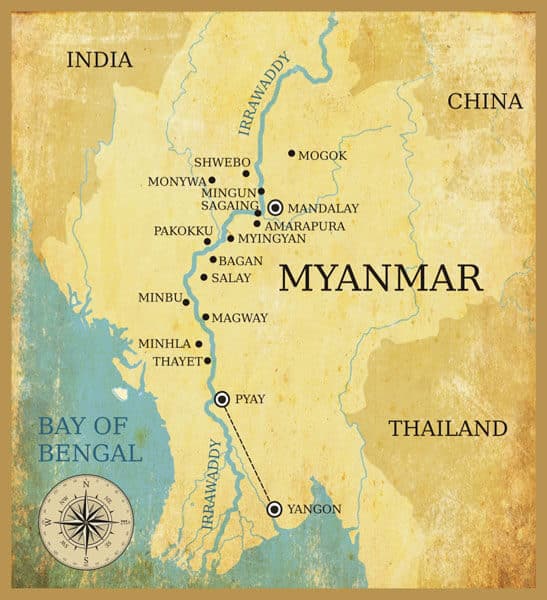
2. The Central Mountains
- These are the prominent and extensive mountain ranges that cover the parts of Central Asia.
- They consist of Pamir and Tian Shan ranges and extending across portions of Afghanistan, China, Kazakhstan, Kyrgyzstan, Tajikistan, and Uzbekistan.
- These mountain ranges are designated as biodiversity hot spots by Conservation International which covers several montanes and alpine ecoregions of Central Asia.
- It encompasses several habitat types, including montane grasslands and shrublands, temperate coniferous forests, and alpine tundra.
- A mountain knot is a junction of two or more mountain ranges. The two main mountain knots in Asia are:
- The Pamir Knot is the junction of five mountain ranges they are the Sulaiman, the Hindu Kush, the Kunlun, the Karakoram, and the Himalayan ranges. Mount Everest, the highest peak in the world in the Himalayan range.
- The Armenian Knot is connected to the Pamir Knot by the Elburz and the Zagros Ranges that originate in the Armenian Knot. The Tien Shan and the Altai are other mountain ranges in Asia.
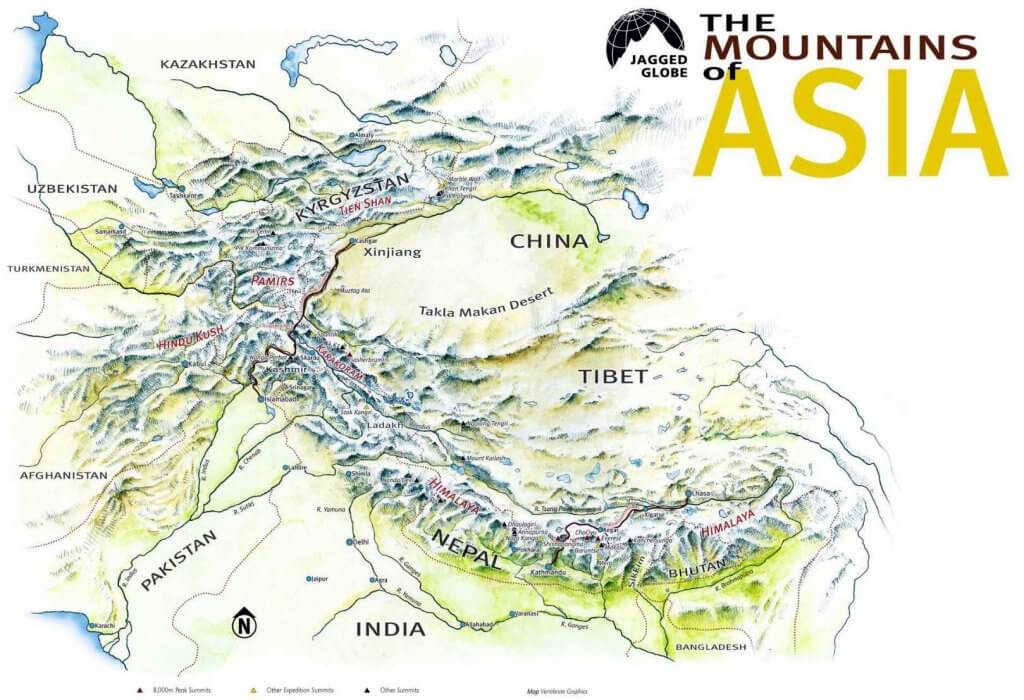
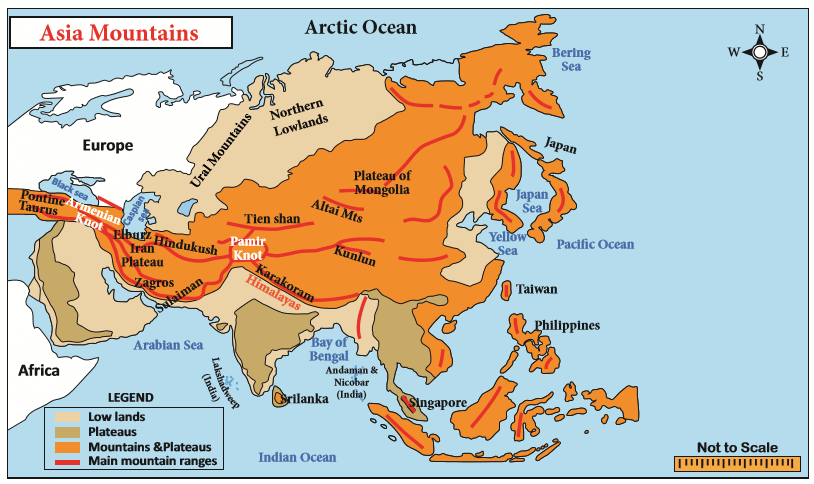
Peaks of Asia
- Mount Everest (8848 m), Nepal-Tibet, China border
- K2 (8,61,1 m), (POK) India -China
- Kangchenjunga (8,586 m), Nepal-Sikkim (India).
- Lhotse (8,516 m), Nepal-Tibet, China
- Makalu (8,462 m), Nepal-Tibet, China
- Cho Oyu (8,201 m), Nepal
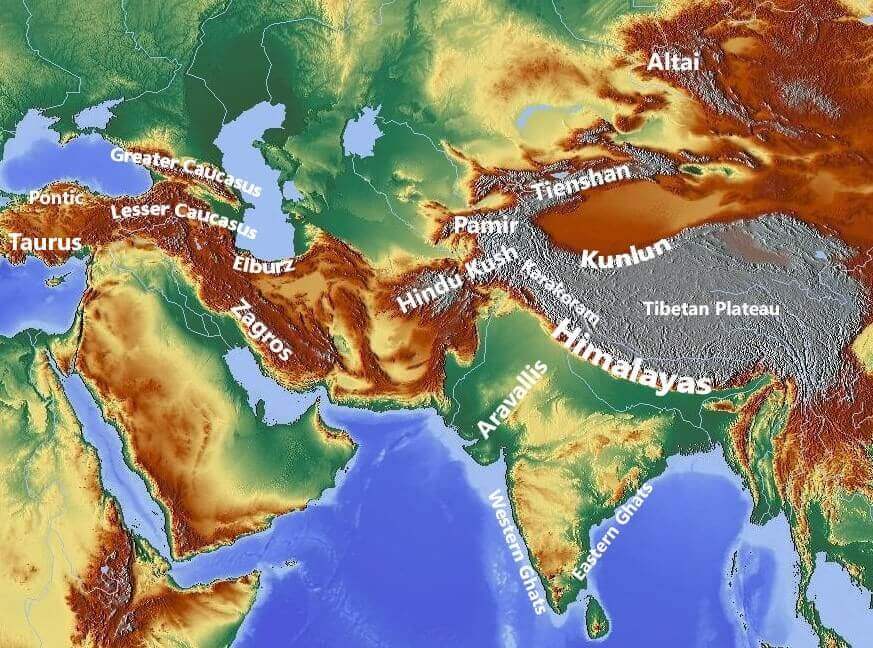
3. The Central and Southern Plateaus
Plateaus are the land areas having a relatively that surface considerably raised above adjoining land on at least one side, and often cut by deep canyon.
Major Plateaus of Asian Continent –
| Plateau | Location | Types |
| Ladakh | Between Karakoram and Himalaya mountain ranges | Intermontane |
| Tibet | Between Kulun and Himalayan Mountain range | Intermontane |
| Yunan | Situated on the southeast of the Tibet Plateau and separated from Szechuan Basin extensive fertile land by the range of Mountains | Piedmont |
| Pamir | Well connected to the range of mountains such as The Himalayas with the Tian Shan, Karakoram, Kunlun, and the Hindu Kush ranges on all sides | Intermontane |
| Armenian | Present in between Caspian and the Black Sea | Piedmont |
| Iranian | Present in between Zagros Mountains, Caspian Sea, Turkmen-Khorasan Mountain Range | Piedmont |
| Mongolian | Surrounded by the Greater Hinggan Mountains in the east, the Yin Mountains to the south, the Altai Mountains to the west, and the Sayan and Khentii mountains to the north | Intermontane |
| Shan | Stretched in the Pegu Yoma and Arkan Yoma in the eastern part of Myanmar, | Intermontane |
| Deccan | Extended in between the Western Ghats in the west and the Eastern Ghats in the east of Indian Subcontinent, it almost touches the southern tip of India and in north covered by the Satpura and Vindhya Ranges | Intermontane |
| Anatolian | Enclosed between Pontic mountain ranges in the South and Taurus in the southwest | Volcanic |
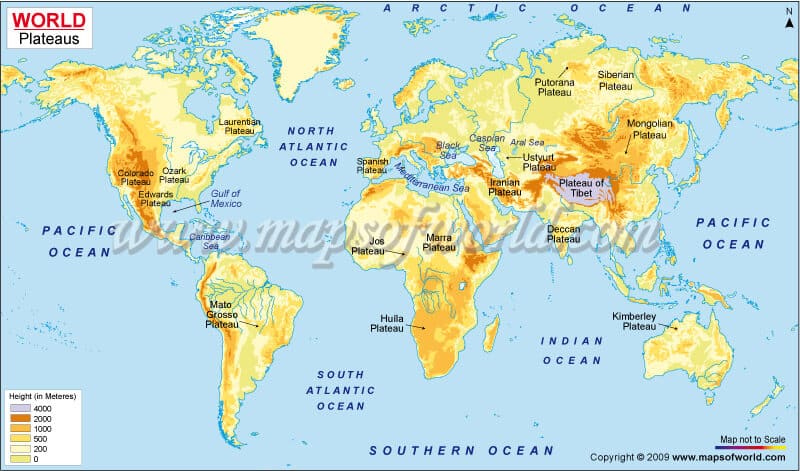
4. Peninsulas
A peninsula is a mass of land surrounded by water but attached to the mainland. The Deccan plateau region is also a peninsula. The major peninsulas of Arabia, India, and Malay are in southern Asia. The Kamchatka peninsula lies in northeastern Asia.
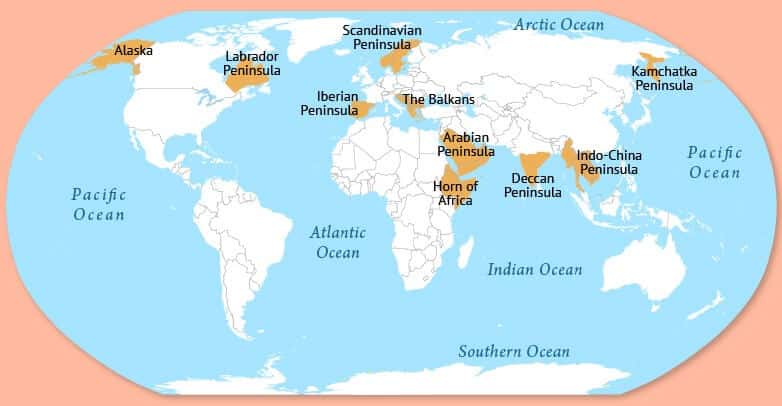
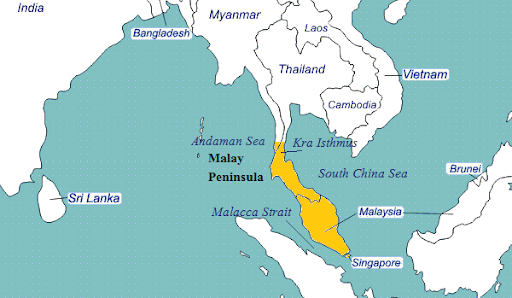
5. Deserts
Asia has some big deserts such as the Gobi, the Takla Makan, the Thar, the Kara-Kum, and the Rub-al-Khali Deserts.
The Rub’ al Khali desert, considered the world’s largest sand sea, covers an area larger than France across Saudi Arabia, Oman, the United Arab Emirates, and Yemen.
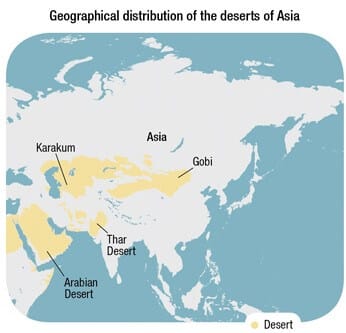
6. (a) Islands of Asia
Asia also has a cluster of islands, also called an archipelago. An archipelago sometimes called an island group or island chain, which is formed close to each other in large clusters. Indonesia, Philippines, Japan, Andaman, and Nicobar are some examples of archipelagos.
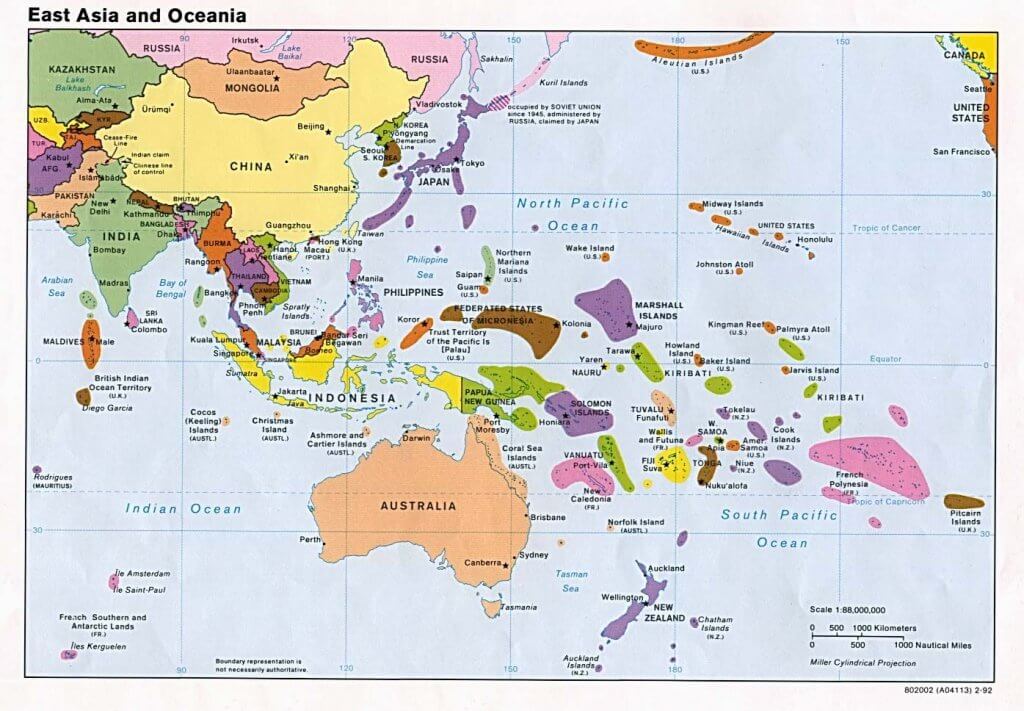
6. (b) Drainage of Asia
The drainage of Asia consists of mighty oceans, extensive seas, lengthy rivers, and their tributaries and distributaries, major lakes, etc.
Oceans: Asian continent is surrounded by three major ocean from three sides such as
The Pacific Ocean – It covers the eastern part of Asia where major rivers of eastern Asia drain, such as Menam Mekong, Xi Jiang, Chang Xiang, Huang Ho, and Amur.
The Indian Ocean – It covers the southern part of Asia and the major rivers that flow into the Indian Ocean are Tigris, Euprates, the Indus, the Ganga, Brahmaputra, Irrawaddy, Salween.
The Arctic Ocean – It covers the Noth east part of Asia and consists of three major rivers such as Ob, Yenisey, and Lena.
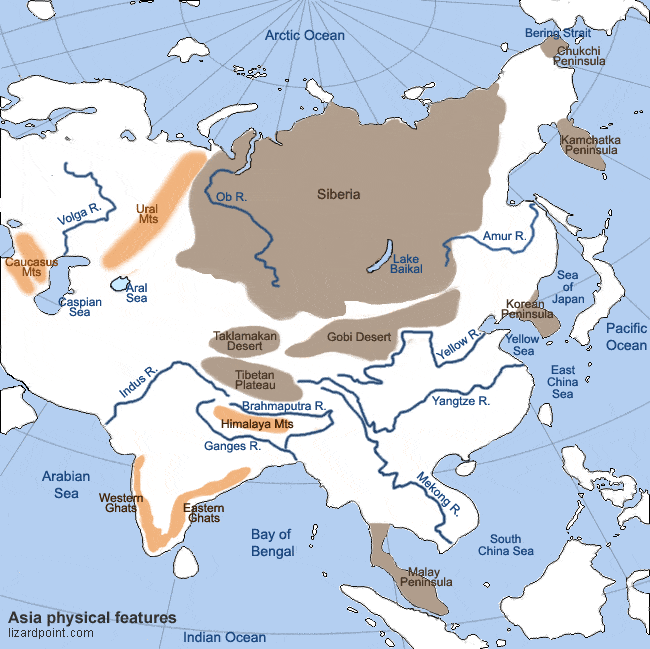
Seas:
As the continent is covered by sea from its three sides, It has also characterized by the long stretch of bay and gulf.
Major seas contributing to Asian Drainage are Andaman Sea, Arabian Sea, Banda Sea, Barents Sea, Bering Sea, Black Sea, Caspian Sea, East Siberian Sea, Java Sea, Kara Sea, Laccadive Sea, Sea of Japan, Sea of Okhotsk. The South China Sea and the Yellow Sea.
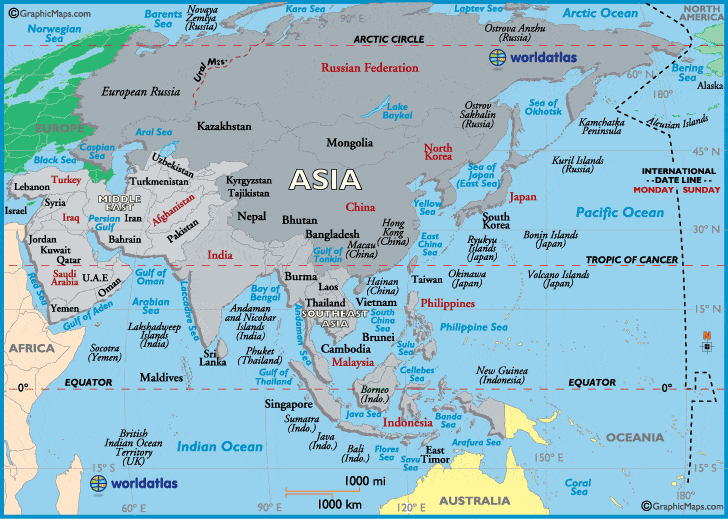
| Name | Location | Part of Ocean |
| Kara Sea, Laptev Sea, and East Siberian Sea | North of Russia | Arctic Ocean |
| Bering Sea | Northerst of Russia | Pacific Ocean |
| Sea of Okhotsk | East of Russia | Pacific Ocean |
| Sea of Japan | West of Japan | Pacific Ocean |
| Yellow Sea | West of Korea | Pacific Ocean |
| East China Sea | East of China | Pacific Ocean |
| South China Sea | South of China | Pacific Ocean |
| Sulu Sea | West of the Philippines Island | Pacific Ocean |
| Celebes Sea | North of Celebes Island | Pacific Ocean |
| Banda Sea | East of Celebes Island | Pacific Ocean |
| Flores Sea | South of Celebes Sea | Pacific Ocean |
| Molucca Sea | East of Celebes Island | Pacific Ocean |
| Java Sea | North of Java | Pacific Ocean |
| Timor Sea | Northwest of Australia | Pacific Ocean |
| Arafura Sea | North of Australia | South Pacific Ocean |
| Bay of Bengal | East of the Indian Peninsula | Indian Ocean |
| Arabian Sea | West of the Indian Peninsula | Indian Ocean |
| Red Sea | Separates Asia from Africa | Indian Ocean |
Lakes:
Major lakes of Asia are
- Lake Baikal, Onega, Ladoga, and Peipus in Russia;
- Lake Akan, Mashu, Biwa, Shikotsu in Japan;
- Qinghai Lake, Lake Khanka in China;
- Dal Lake, Chilka, Vembanada, Pullicat and Sukhna in India;
- Lake Matano and Toba in Indonesia, etc.
Baikal is the deepest lake in the world. It is in Southern Siberia, Russia.
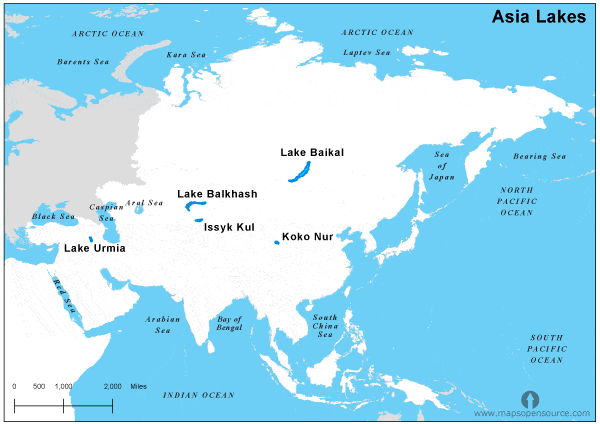
Freshwater
- Lake Baikal, located in southern Russia, is the deepest lake in the world, reaching a depth of 1,620 meters (5,315 feet). The lake contains 20 percent of the world’s unfrozen fresh water, making it the largest reservoir on Earth. It is also the world’s oldest lake, at 25 million years old.
- The Yangtze is the longest river in Asia and the third-longest in the world (behind the Amazon of South America and the Nile of Africa). Reaching 6,300 kilometers (3,915 miles) in length, the Yangtze moves east from the glaciers of the Tibetan Plateau to the river’s mouth on the East China Sea. The Yangtze is considered the lifeblood of China.
- The Tigris and Euphrates Rivers begin in the highlands of eastern Turkey and flow through Syria and Iraq, joining in the city of Qurna, Iraq, before emptying into the Persian Gulf. The land between the two rivers, known as Mesopotamia, was the center of the earliest civilizations, including Sumer and the Akkadian Empire.
Saltwater
- The Persian Gulf has an area of more than 234,000 square kilometers (90,000 square miles). It borders Iran, Oman, United Arab Emirates, Saudi Arabia, Qatar, Bahrain, Kuwait, and Iraq. The gulf is subject to high rates of evaporation, making it shallow and extremely salty.
- The Sea of Okhotsk covers 1.5 million square kilometers (611,000 square miles) between the Russian mainland and the Kamchatka Peninsula.
- The Bay of Bengal is the largest bay in the world, covering almost 2.2 million square kilometers (839,000 square miles) and bordering Bangladesh, India, Sri Lanka, and Burma. Many large rivers, including the Ganges and Brahmaputra, empty into the bay.
Straits:
The important straits in Asia are the Strait of Malacca, Bering Strait, etc.
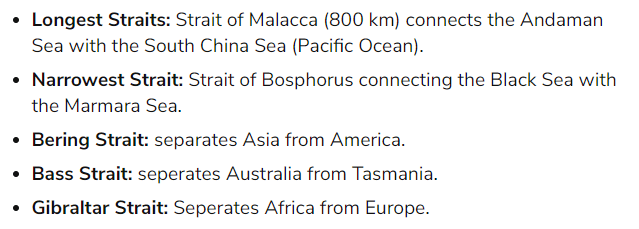
| Name | Separates | Connects |
| Bering Strait | Asia and North America | East Siberian Sea with Bering Sea |
| La Parouse Strait | Sakhalin Island and Hokkaido Island | Sea of Okhotsk with Sea of Japan |
| Tata Strait | Eastern Russia and Sakhalin | Sea of Okhotsk with Sea of Japan |
| Korea Strait | South Korea and Kyushu (Japan) | Yellow Sea with Sea of Japan |
| Formosa Strait (Taiwan Strait) | Taiwan and China | East China Sea with South China Sea |
| Luzon Strait | Taiwan and Luzon (Philippines) | South China Sea with Pacific Ocean. |
| Makassar Strait | Borneo (Kalimantan) and Celebes Island | Celebes Sea with Java Sea. |
| Sundra Strait | Java and Sumatra | Java Sea with India Ocean |
| Malacca Strait | Malaya Peninsula and Sumatra | Java Sea with Bay of Bengal |
| Strait of Jahore | Singapore and Malaysia | South China Sea with strait of Malacca |
| Strait of Hormuz | UAE and Iran | Persian Gulf with Gulf of Oman. |
| Strait of Bosporus | Asia and Europe | Black Sea with Sea of Marmara. |
| Strait of Dardanelles | Asia and Europe | Sea of Marmara with Mediterranean Sea |
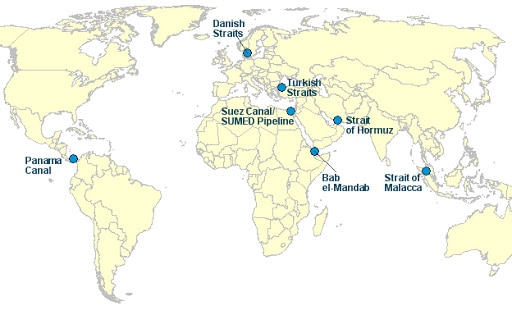
Resources
Asia’s climate can be most generally divided into three zones:
- North/central,
- Southwest
- Southeast
North/central Zone–
- The continent’s north/central zone is affected by cold and dry Arctic winds, especially the Siberia region of Russia.
- Hardier grains, such as barley, buckwheat, millet, oats, and wheat, are grown in the central and southern areas of this zone, where permanent frosts inhibit plant growth.
- Animal husbandry is also very important in this zone. In Mongolia, for example, 75 percent of agricultural land is allocated to the rearing of livestock, such as sheep, goats, and cattle.
Southwest–
- The southwest zone is a dry, hot region that stretches from the Gobi Desert in Mongolia through Pakistan, Iran, and into the Arabian Peninsula.
- This zone has very few areas with enough moisture and precipitation to produce crops. Grains, such as barley and corn, are the principal irrigated crops of some countries.
- Dates, figs, apricots, olives, onions, grapes, and cherries are the most important of these fruit and vegetable crops.
Southeast–
- The southeast zone is greatly affected by the summer monsoon season.
- Rice is one of Asia’s most important agricultural commodities and a major food staple of the entire continent.
- Many regions where rainfall is less, grow a large amount of wheat.
- Southeast Asia is also a major producer of tropical fruits, such as mango, papaya, and pineapple. India is the world’s largest mango-producing nation, accounting for roughly 40 percent of total global output.
Mining:
- China, India, Russia, and Indonesia are the continent’s most productive mining economies. These countries extract many of the same minerals.
- China is the world’s largest producer of aluminum, gold, tin, and coal.
- India is also a major producer of aluminum and iron ore, along with other minerals such as barite (used in drilling fluids), chromium (used in steel production and dyes), and manganese (used in steel production).
- Russia is a major producer of coal, tungsten (used in steel production), diamonds, iron, and steel.
- Indonesia is a major producer of coal, gold, copper, and tin.
Drilling:
- Countries on the Arabian Peninsula have the world’s largest deposits of oil and natural gas. These fossil fuels are drilled for energy and fuel.
- The oil found throughout the Arabian Peninsula and the Middle East is of the highest quality: light sweet crude.
- Light sweet crude oil is used to make gasoline, kerosene, and diesel fuels.
- In 2010, Saudi Arabia was the world’s largest manufacturer of petroleum liquids, producing 10.07 million barrels of liquid fuels every day. (An oil barrel is 159 liters or 42 gallons.) It also has the world’s largest oil reserves, at roughly 250 billion barrels.
- Russia has oil reserves in Siberia and massive natural gas reserves throughout the Arctic.
- Russia and Iran have the world’s largest reserves of natural gas, while the US produces the most.
Quiz:
Q1. The Gaza Strip is a self-governing territory of:
(a) Israel
(b) Jordan
(c) Lebanon
(d) Palestine
Solution: (d)
Hamas is a Palestinian Islamist political organization and militant group that has waged war on Israel since the group’s 1987 founding, most notably through suicide bombings and rocket attacks. It seeks to replace Israel with a Palestinian state. It also governs Gaza independently of the Palestinian Authority.
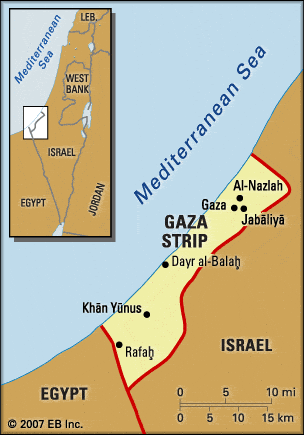
Q2. Which of these water bodies witnesses sun rise at the earliest?
a) Red Sea
b) Black Sea
c) Caspian Sea
d) Mediterranean Sea
Solution: c)
Caspian sea lies the easternmost among all of the options. Black Sea lies to the west of Caspian Sea.
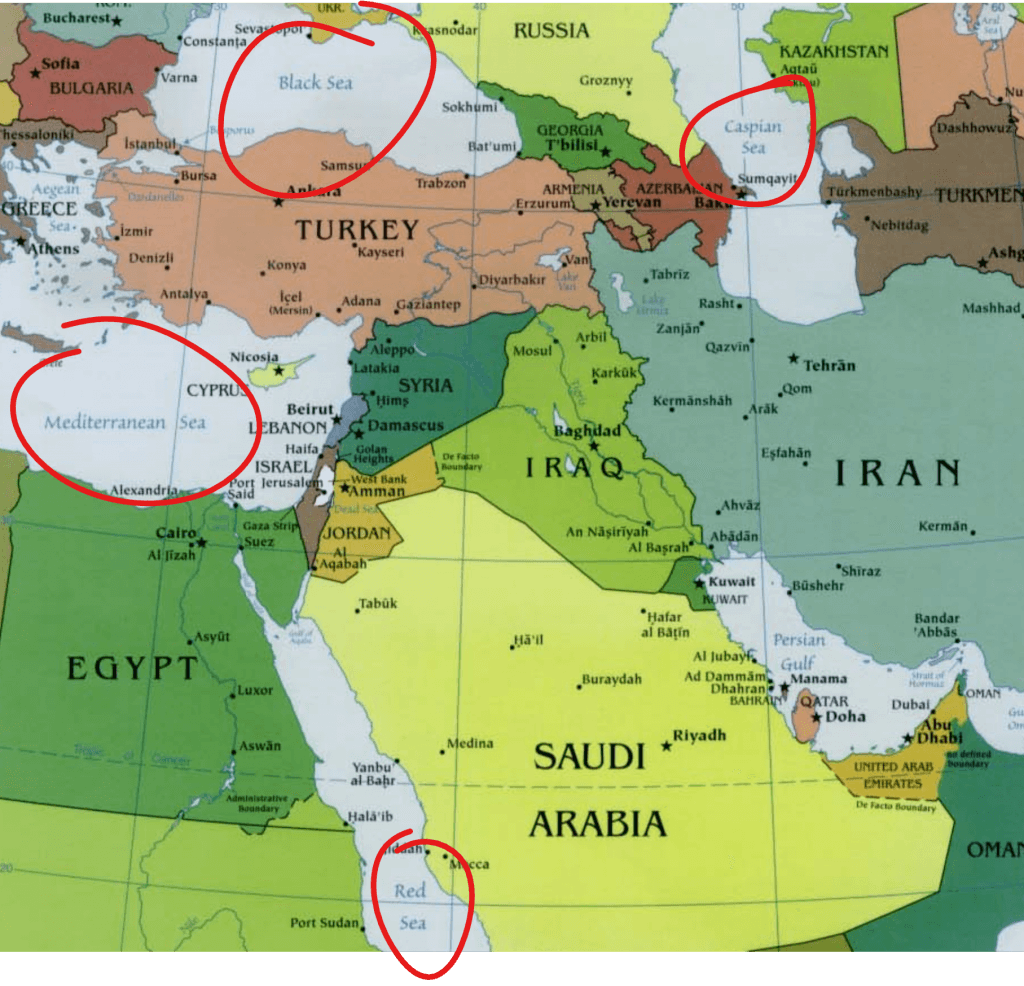
Q3. The Red Sea is a strip of water and an inlet of the Indian Ocean occupying the area separating the continent of Africa from Asia. The countries bordering the Red Sea are –
- Saudi Arabia
- Yemen
- Ethiopia
- Egypt
- Djibouti
Select the correct answer code:
a) 1, 2, 3, 4
b) 1, 2, 3, 5
c) 2, 3, 4, 5
d) 1, 2, 4, 5
Solution: d)
The six countries that border the Red Sea are the following: Saudi Arabia, Yemen, Egypt, Sudan, Eritrea, and Djibouti.
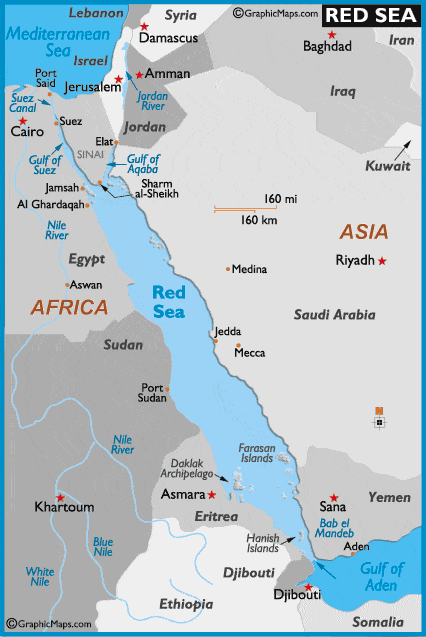

Superb content ….thnkuuu….really thnkuuuuuu😊
Thank You Very Much Sir/Madam… One of the best and quite Informative Article …Thanks
Most Welcome Mohit
This website is really amazing,very helpful for me , thank you @lotus Arise
Best website for mapping
SUCH AN EXCELLENCE CONTENT
Keep reading
It’s an amazing resource provided by the website, very concise and useful ,
Enjoy
THESE NOTES ARE VERY HELPFUL
Thank you very much god bless you
Excellent content with Quality material n precise Topics…Thank You
Super content, 🥰😍
Upsc lover
Amazing site. And also
well explained
Thank you very much
Very valuable notes sir
Best website for preparation
thank you for the valuable information
Thanku sir
Kia yahi cheeze hindi me mil sakti he
Best
अभी फिलहाल आपके कंटेंट्स से जितनी जानकारी मैंने पाई, इसका आभार जताने के लिए मेरे पास पर्याप्त और सटीक शब्द ही नहीं है।
Thanks for such a wonderful content.
Sir i purchased this pdf@199 but unable to find it
Want ur help
Please SMS me on Whatsapp or Telegram (8595326267)!
Nice content
thank yo very much sir
The map in the explanation is very clear, and how can I get that atlas map book, suggest me atlas
https://store.lotusarise.com/product/world-geography-complete-notes-for-upsc/
https://lotusarise.com/geography-optional-books-for-upsc/
thank you
Thanku sir